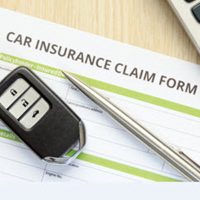How Do Attorneys Assess the Value of a Car Accident Claim?

After suffering injuries in a Columbus, Ohio, car accident due to the negligence of another party, you have the right to file a claim against the negligent party and seek financial compensation for your injuries and damages. If you have a car accident claim against a negligent party, one of your primary concerns is most likely related to the potential value of your claim. Since every car accident is different, there is no average settlement amount for Columbus car accident claims. Car accident attorneys employ a comprehensive and meticulous approach to accurately determine the value of a car accident claim. In this article, we discuss how some attorneys may assess the value of a car accident claim.
How Do Attorneys Assess the Value of a Car Accident Claim?
Skilled attorneys determine the value of a car accident claim by evaluating the impact the accident has had and will have on the individual’s life. Car accident lawyers consider all damages when determining how much money an individual may be able to recover from the at-fault party’s insurance company. Additionally, attorneys consider several factors that can influence the value of a claim. Below is a look at how attorneys assess the value of a car accident claim;
- Evaluating Economic Damages
Economic damages are the quantifiable financial losses resulting from the accident. When evaluating a car accident claim, attorneys consider all the economic damages an individual may be entitled to. Examples of economic damages considered in a car accident claim’s valuation include present and future medical expenses, lost wages, future lost earnings, and property damage. Car accident attorneys meticulously compile and assess receipts, invoices, pay stubs, employment records, and other relevant documents to calculate these losses accurately.
- Evaluating Non-Economic Damages
Non-economic damages, or the non-financial damages resulting from the incident, are perhaps more important than economic losses in many cases because they are the harms suffered that actually impact one’s day to day life. Non-economic damages are another type of damages attorneys consider when evaluating the value of a car accident claim. Non-economic damages differ from economic damages in that they are non-quantifiable and subjective. Examples of non-economic damages assessed during a car accident claim’s valuation include emotional distress, pain and suffering, and loss of enjoyment of life. Evaluating non-economic damages can be complex since these damages don’t have clear monetary values. Non-economic damages require careful evaluation of the individual’s personal experiences post-accident.
- Analyzing Liability and Comparative Fault
A crucial factor that can impact the value of a Columbus car accident claim is “comparative or contributory fault.” Comparative fault is a legal concept used to apportion blame among parties in an accident. Under this principle, all parties involved in an accident are assigned a percentage of fault. If the person filing the car accident claim is considered partially at fault for the accident, their compensation will be reduced by their percentage of fault. For example, if you are 40% at fault for your car accident and the total of your damages is $100,000, you will recover $60,000, which is 60% of $100,000.
- Reviewing Insurance Policy Limits
Attorneys also review the negligent party’s insurance policy, as well as any other applicable coverage such as underinsured or uninsured motorists’ coverage, to understand the maximum amount available for compensation. Such coverage may be relevant as a practical consideration where the negligent party would be difficult to collect a judgment against. This would include circumstances where the negligent party has little assets or is a minor.
Contact a Columbus Car Accident Lawyer
Our skilled Columbus car accident attorneys at the law firm of Brian G. Miller CO., LLC, are committed to advocating on your behalf to reach the best possible resolution. Contact us today for a case evaluation.


